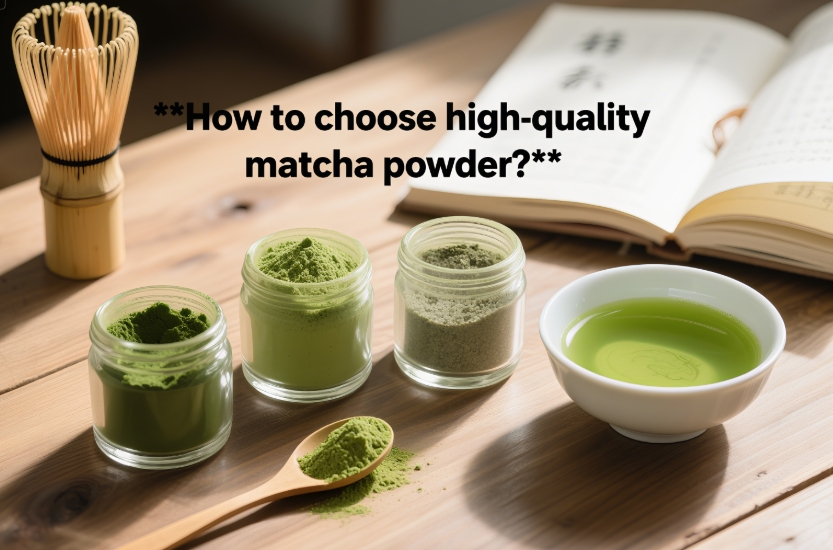How to choose high-quality matcha powder?
The color is emerald green and shiny, the aroma is fresh with seaweed fragrance.........
Release time:
2025-08-13
Source:
Selecting high-quality matcha powder requires multiple evaluations, including raw materials, craftsmanship, sensory characteristics, and safety certification. In particular, matcha powder, as a "whole-leaf ground" product, its quality is directly related to the quality of the raw tea leaves and processing details.
一、ORIGIN
- Japan's classic wine regions:Uji (Kyoto)、 Shizuoka、Mie Prefecture is the core production area of Japanese matcha. Uji matcha has a fresher flavor due to its large temperature difference between day and night, pure water quality, and high chlorophyll and amino acid content in tea leaves.
- Domestic high-quality production areas:High-altitude tea plantations in Hangzhou, Zhejiang, Huangshan, Anhui, and Zunyi, Guizhou, due to their superior ecological environment, can also produce high-quality matcha, which is characterized by a fresh aroma and low bitterness.。
二、COLOR
- Avoid pitfalls:

- Too dark gray/black:It may be that the tea leaves were picked too late (aging of leaves), or the high temperature during processing destroyed the chlorophyll.
- Too light yellow:It may be that the raw materials are of low grade (such as summer tea or autumn tea), or it may be mixed with other powders (such as wheat grass powder or green tea powder).
- Exceptionally bright colors:Be wary of artificial coloring (you can brew it in small amounts, but after the coloring powder dissolves, the soup will become "floating" and lose its natural texture).
三、SMELL
- inferior features:
- Musty/stale smell:The raw tea leaves are not stored properly or are not sealed after processing, causing them to become damp and deteriorate.
- Burnt/fireworks smell:The temperature is too high during grinding (such as insufficient heat dissipation from mechanical grinding), which destroys the active ingredients of the tea.
- Flavor:Cheap products may add artificial flavoring to simulate the aroma of tea, which can be pungent and unnatural.
四、TASTE
- Premium taste:
- The powder is fine and there is no granular feeling when entering the mouth
- It tastes slightly bitter at first, but the bitterness dissipates quickly, followed by a distinct sweet aftertaste, without any astringency or "green taste".
- Poor taste:
- Rough and grainy: poor grinding process and insufficient fineness.
- Strong astringency and no aftertaste of sweetness: the raw materials are coarse and old tea leaves, or the tea is over-oxidized during processing.
- Fishy/earthy smell: This may be because the tea leaves were grown in polluted soil or were not processed in a hygienic manner.
五、GRADE
- Japanese Grade:Common ones include "first-class tea", "second-class tea" and "third-class tea". First-class tea is the first picking of spring tea, with the tenderest leaves, the best nutrition (amino acids, chlorophyll) and flavor; second-class tea and third-class tea are picked later, with older leaves and a stronger bitterness.
- Domestic grade:It is usually marked as "special grade" or "first grade". Special grade matcha is made from early spring buds, and first grade is second only to it.
7. CERTIFICATION
- Organic certification:There are inorganic agricultural product certifications (such as Japan JAS organic, China organic certification), ensuring that there are no pesticides or fertilizer residues in the raw material planting process。
- Pesticide Residue/Heavy Metal Test Report:Regular brands will provide third-party testing reports, focusing on whether heavy metals such as lead and cadmium, as well as pesticide residues such as 666 and DDT meet national standards.
previous page
Related News
2025-06-30
2025-06-04
2025-05-27







